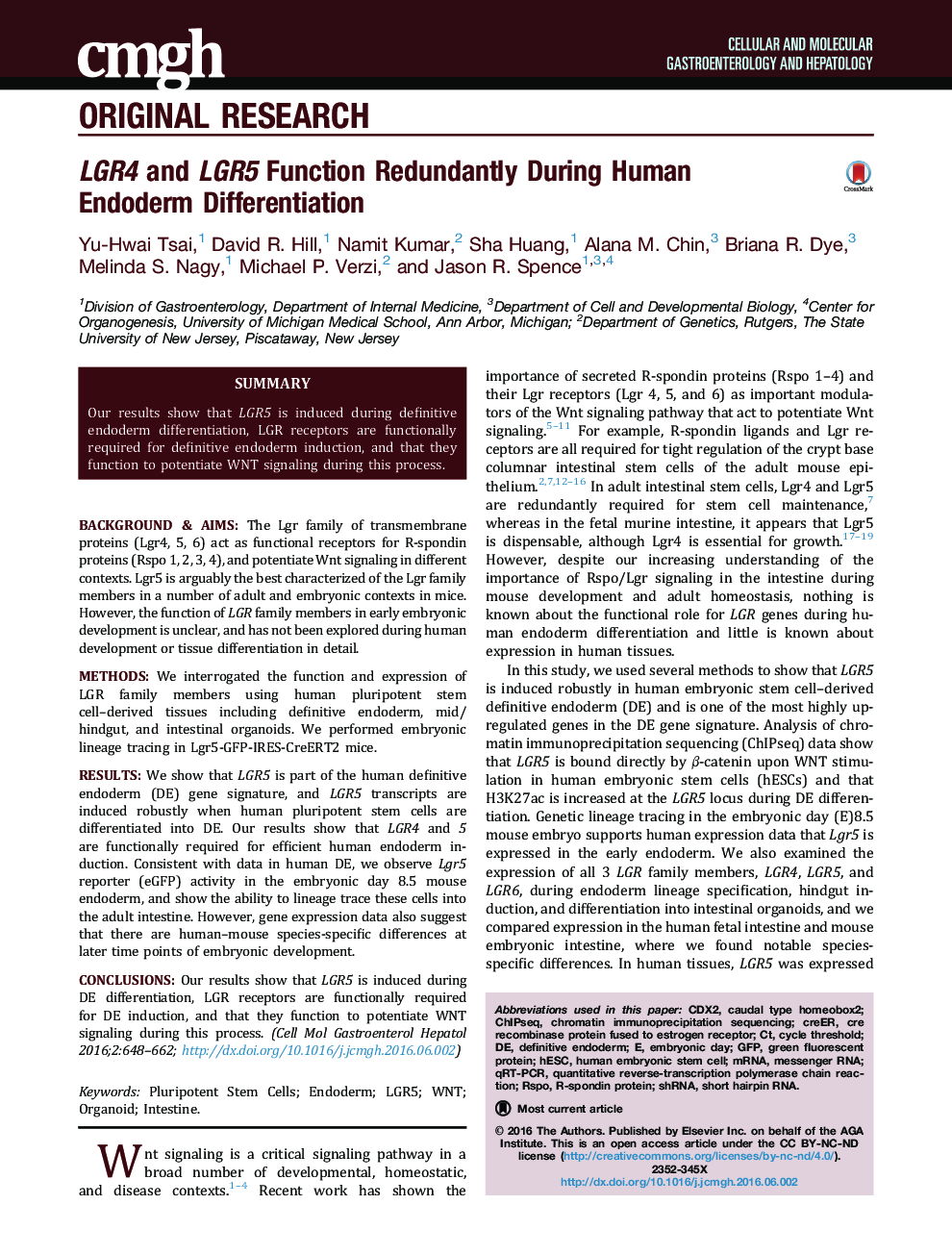| Article ID | Journal | Published Year | Pages | File Type |
|---|---|---|---|---|
| 5517314 | CMGH Cellular and Molecular Gastroenterology and Hepatology | 2016 | 23 Pages |
Background & AimsThe Lgr family of transmembrane proteins (Lgr4, 5, 6) act as functional receptors for R-spondin proteins (Rspo 1, 2, 3, 4), and potentiate Wnt signaling in different contexts. Lgr5 is arguably the best characterized of the Lgr family members in a number of adult and embryonic contexts in mice. However, the function of LGR family members in early embryonic development is unclear, and has not been explored during human development or tissue differentiation in detail.MethodsWe interrogated the function and expression of LGR family members using human pluripotent stem cell-derived tissues including definitive endoderm, mid/hindgut, and intestinal organoids. We performed embryonic lineage tracing in Lgr5-GFP-IRES-CreERT2 mice.ResultsWe show that LGR5 is part of the human definitive endoderm (DE) gene signature, and LGR5 transcripts are induced robustly when human pluripotent stem cells are differentiated into DE. Our results show that LGR4 and 5 are functionally required for efficient human endoderm induction. Consistent with data in human DE, we observe Lgr5 reporter (eGFP) activity in the embryonic day 8.5 mouse endoderm, and show the ability to lineage trace these cells into the adult intestine. However, gene expression data also suggest that there are human-mouse species-specific differences at later time points of embryonic development.ConclusionsOur results show that LGR5 is induced during DE differentiation, LGR receptors are functionally required for DE induction, and that they function to potentiate WNT signaling during this process.
